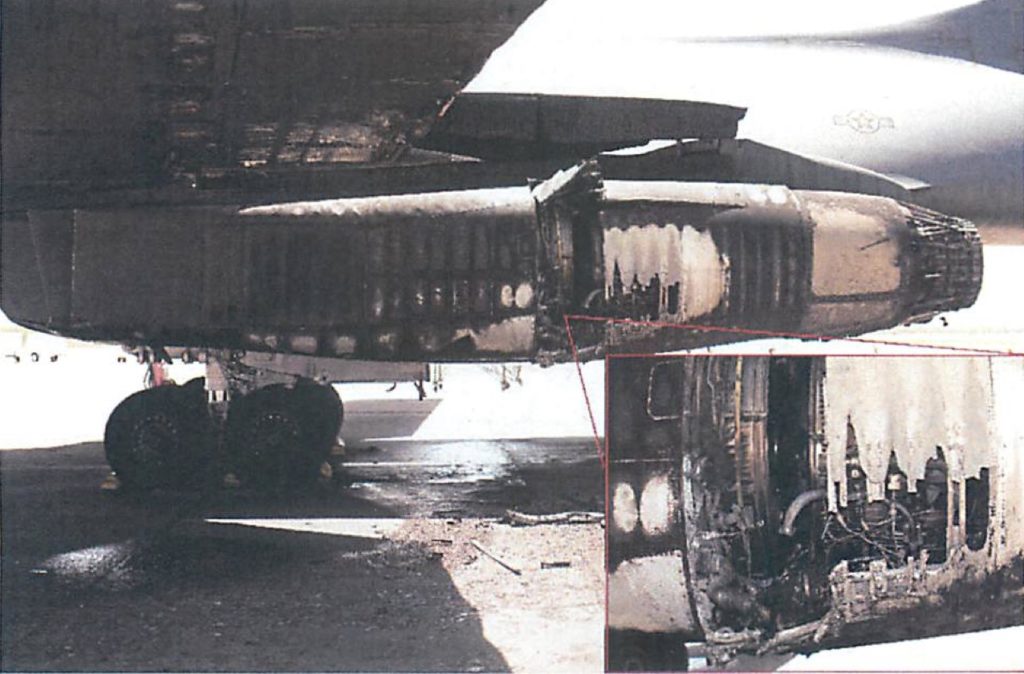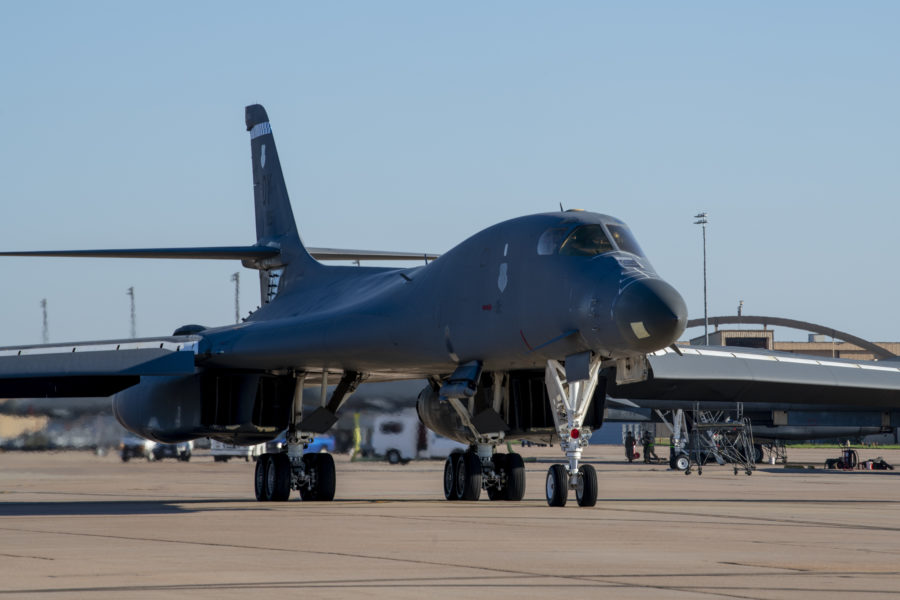A cracked engine part sparked a massive fire that caused shrapnel and burn injuries to an Airman and nearly $15 million in serious damages to a B-1B Lancer bomber last spring.
The bomber’s jet engine was running as mechanics at Dyess Air Force Base, Texas, were working on its hydraulics April 20, 2022, according to a recently released Air Force Investigation Board report.
The B-1’s pilots first noticed an issue when the plane was attempting a “hot” refuel with its engines running when a nozzle malfunctioned. The Airmen called in propulsion specialists, who after fiddling with the throttles, determined the issue was resolved for the moment. After the issue popped up again, further investigation by Airmen determined there was a hydraulic issue that needed to be addressed. Maintainers began work on the system and looked to be solving the plane’s issue.
The crew was running the engine “to check proper operations of the engine hydraulic pump and to ensure it did not leak fluid” in accordance with technical orders, the Air Force investigation report reads.
During the check, the number one engine on the plane’s left side “catastrophically failed,” which ejected a fan disk from the intake and served fuel lines. A massive fire ensued. The fan disk eventually landed over 500 feet away from the B-1, according to the Air Force.
The Air Force’s investigation found that “high-cycle fatigue”—caused when the plane accelerates and decelerates—of the 2nd stage fan disk began to cause a crack. Like many cases of unsuspected metal fatigue, the fan disk became a ticking time bomb. Investigators found the crack grew nearly an inch before it finally completely broke apart, causing disastrous damage to the engine and plane and injuring Airmen.
“The fireball rose approximately 200 feet into the air and ejected parts of the engine and cowling up to 1,000 feet away,” the Air Force report states. The fire engulfed 50 feet of the left wing.
Video purportedly showing the fire was posted to the unofficial “Air Force amn/nco/snco” Facebook page, though the Air Force never confirmed the video’s veracity.

The fan disk was at only one-quarter of its projected service life, the report said.
The Air Force said it could not find the root cause of the high-cycle fatigue that caused the initial crack and turned the GE-made engine into a shrapnel-spitting inferno. The investigation said all Airmen involved followed proper procedures and were fully qualified to perform the work.
“No factors substantially contributed to this mishap,” the investigation concluded.
It is unclear what happened to the plane in question, tail number 85-0089, though the report said it suffered “extensive fire damage.” The Airman injured in the incident was treated at a local hospital for minor wounds.
The B-1 fleet, which has an average age of 35 years, has been flown hard during its service life. B-1s had a mission-capable rate of just over 40 percent in 2021, a far lower percentage than the much older B-52 and stealth B-2 had, though B-2s are currently grounded due to safety concerns.

